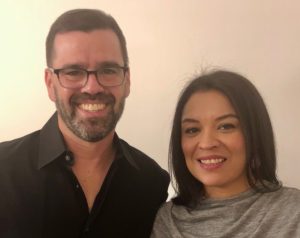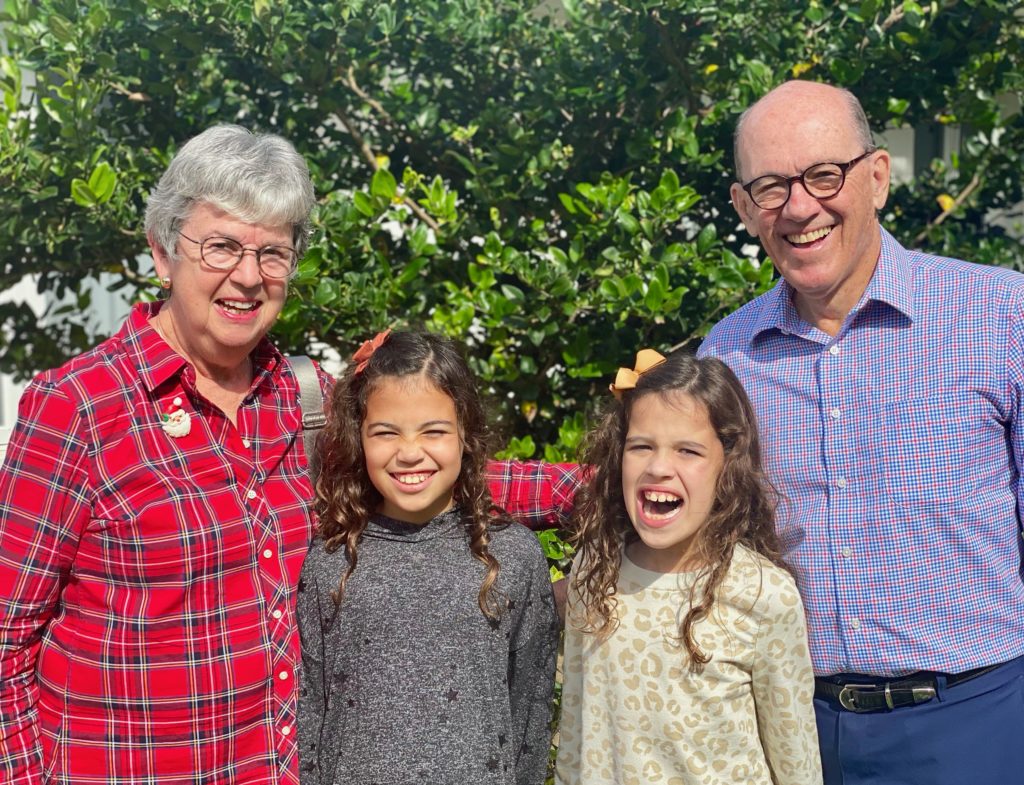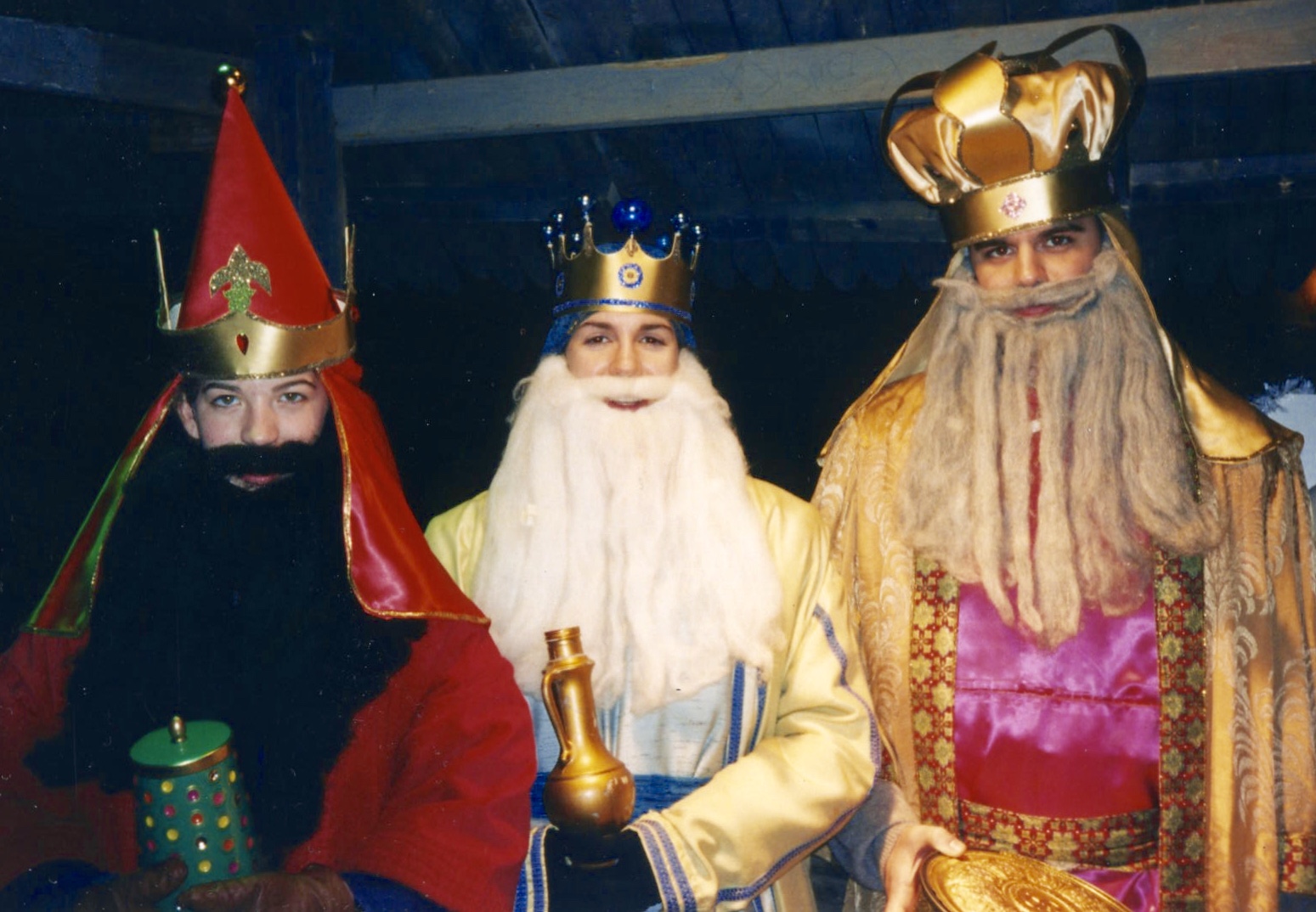Celebrating Births

December is a joyous month for Christians, and particularly for my family. My son David was born on the 18th; his twin daughters arrived on the 4th. Beethoven’s birthday was on the 16th; and the birth of Jesus on the 25th began the Christian calendar 2021 years ago. Last Saturday, Steve and I took Margot and Nina to see The Nutcracker by the Miami City Ballet and presented them with a family-heirloom Nutcracker and a book by that title. Then we gave David and Leslie the evening off to celebrate his birthday as the moon beamed full over Miami. Next Saturday, we will be celebrating Jesus’s birth with family and friends in Charlotte NC. The story of Jesus Christ begins with motherhood. This year, our church, First Presbyterian Church Delray Beach, has emphasized Mary’s spiritual preparation for Jesus’ birth. Our pastors have connected that story to the notion that Christmas can be a time of rebirth and redirection. Though I feel I’m currently on a good course, I wonder how spiritually prepared I was for my children’s births. We were not connected to a church when our first two were born. When Shelby came along, it was a joy to have our church family welcome her and to have her baptized on Christmas Eve. Over the following decades, we became more and more involved in the life of our church, as you can tell in these Advent Memories, which includes this photo:
The story of Jesus Christ begins with motherhood. This year, our church, First Presbyterian Church Delray Beach, has emphasized Mary’s spiritual preparation for Jesus’ birth. Our pastors have connected that story to the notion that Christmas can be a time of rebirth and redirection. Though I feel I’m currently on a good course, I wonder how spiritually prepared I was for my children’s births. We were not connected to a church when our first two were born. When Shelby came along, it was a joy to have our church family welcome her and to have her baptized on Christmas Eve. Over the following decades, we became more and more involved in the life of our church, as you can tell in these Advent Memories, which includes this photo:

Three childbirths were the most intensely wonderful experiences of my life. I’m glad that Steve and I could choose to become parents when we were ready. Eight years ago I wrote how prepared Leslie and David were for having Margot and Nina, just as Lilli and Shelby were when they gave birth to Violet, Stephen and Thomas. Our children and grandchildren were all greatly desired and heartily welcomed.
Two lovely songs have recently deepened my understanding of the spiritual aspect of motherhood. At a concert at First Presbyterian Delray Beach on December 12, Shanna Gundry sang Christmas Lullaby by Jason Robert Brown. The week before I had met Shanna’s sons in Sunday School and knew she was not only an excellent singer, but also a terrific mother. Bringing new meaning to the Magnificat found in Luke 1:46–55, she sang these lyrics with authentic conviction:
I’ll never have the power to control the land
Or conquer half the world
Or claim the sun
I’ll never be the kind who simply waves her hand
And has a million people do
The things I wish I’d doneBut in the eyes of heaven
My place is assured
I carry with me heaven’s grand design
Glory, Oh,
Glory I will sing the name of the Lord
And He will make me shineAnd I will be like Mother Mary
With a blessing in my soul
And I will give the world my eyes
So they can see
And I will be like Mother Mary
With a blessing in my soul
And the future of the world inside of meAnd I will be like Mother Mary
With the power in my veins
To believe in all the things
I’ve yet to be
And I will be like Mother Mary
And I’ll suffer any pains
For the future of the world
For the future of the world
Inside of me.
Immaculate conception seems far-fetched to me, but I believe that every child embodies hope for the future. I can’t seem to find a recording that matches the fervor I heard when Shanna sang. Look for Christmas Lullaby by Jason Robert Brown wherever you get your music and treat yourself to Mary’s song as done on Broadway.
Yesterday morning at church, the choir sang another piece that captured my full attention, Candlelight Carol by John Rutter. It got me at “How can you measure the love of a mother?” How indeed? Here is a video produced last year by Seattle University Choirs, singing remotely about the birth of the Christ child. It portrays how special childbirth is and how music transports us even during difficult times.
I have long wondered about why Catholics direct their prayers through the Virgin Mary instead of directly to God. Is it because they realize that females should be included in the Father-Son-Holy Ghost trinity? Joy Harjo, on page 165 of her memoir, Poet Warrior, questions “the reasoning behind a cultural pantheon that includes no female power figures in the leadership circle, when the natural world shows us that no life is created without male and female power joined together.” I think the story of Christ has to begin with his birth, because a role model for us all could not spring from anywhere but a mother’s love. This Christmas I give thanks for my children and grandchildren and for Mary and all mothers who either give birth or adopt, then continue to care deeply for their children all their lives.
 Back to The Nutcracker. Here’s one of several on view in my neighborhood. Though it has nothing to do with childbirth, it is a gift from an adult to a child. It’s a story of parents caring for children and children using their imaginations and being open to wholesome entertainment from around the world–dancers from Spain, Russia, and China. It’s also about musicians and dancers practicing wisely and achieving their full potential. Moreover, Tchaikovsky’s music is infectious and the dancing of the Miami City Ballet is splendid, bringing joy to all.
Back to The Nutcracker. Here’s one of several on view in my neighborhood. Though it has nothing to do with childbirth, it is a gift from an adult to a child. It’s a story of parents caring for children and children using their imaginations and being open to wholesome entertainment from around the world–dancers from Spain, Russia, and China. It’s also about musicians and dancers practicing wisely and achieving their full potential. Moreover, Tchaikovsky’s music is infectious and the dancing of the Miami City Ballet is splendid, bringing joy to all.
Besides ballet and music, visual art enriches our understanding of childbirth. On Monday 27 December, my Monday morning Bible Study group completed our Advent study by focusing on this painting by an early American artist, John Singleton Copley, which hangs in the Boston Museum of Fine Arts.

We discussed how Copley’s Nativity differs from the many other nativity scenes artists have painted for centuries, especially in the depiction of Mary. I remarked that Mary seems dressed for a wedding, not for childbirth recovery. One friend liked the full moon in the background with the bright star shining its light from offstage on the left. We all agreed that it depicts a holy event and shows Mary’s utter devotion. Mary and Joseph must have been terrific parents to raise such a fine son. Maria, our leader, reminded us of a gospel that was removed from an earlier version of the Bible, the Infancy Gospel of Thomas, which gives an interesting account of Jesus’ childhood to age 12. An authentic account would be valuable indeed!
Leave a Reply